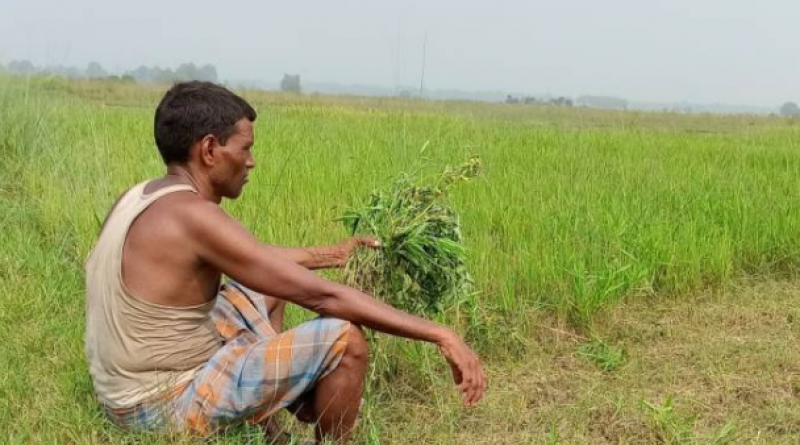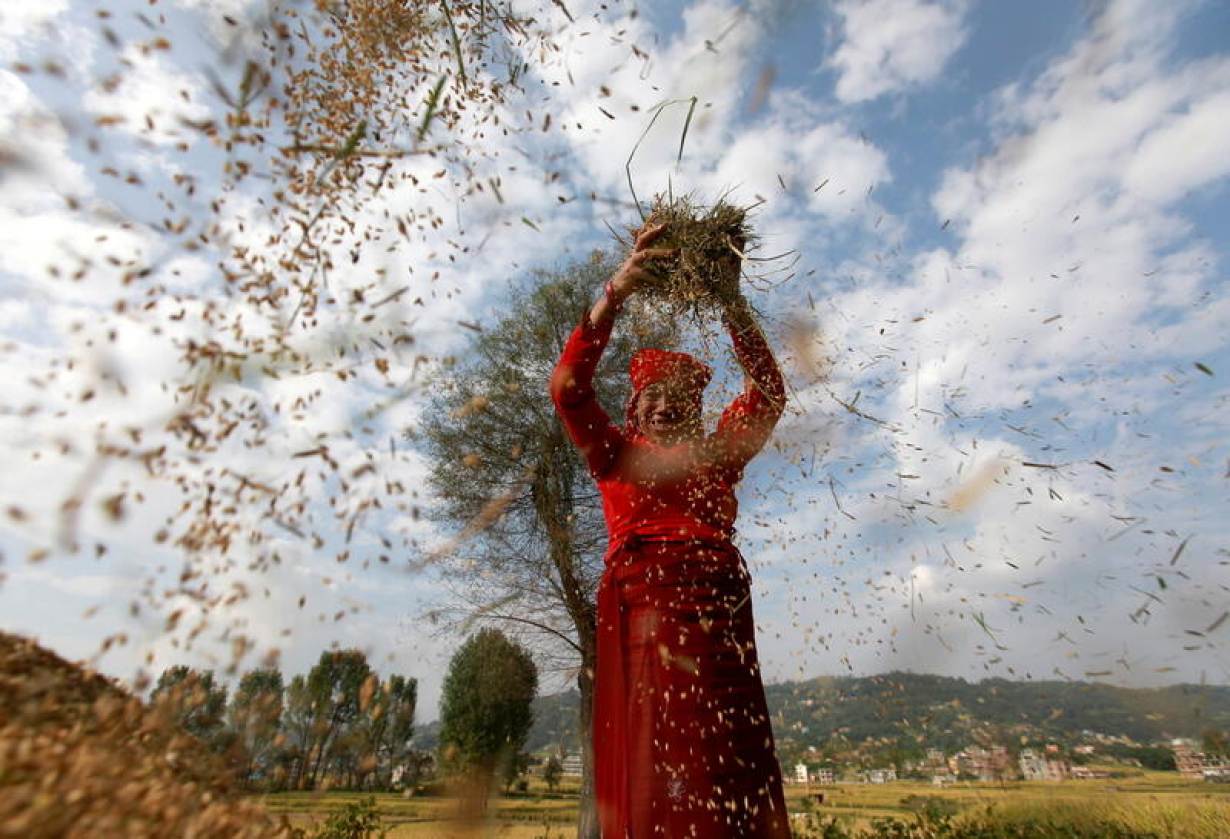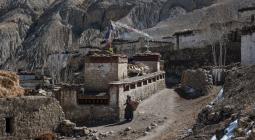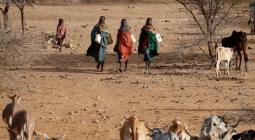Drought and hunger drive Nepal farmers to India, defying COVID ban.

Western Nepal has suffered a long dry spell, harming rice harvests and pushing farmers across the border to seek work even amid the pandemic
NARAINAPUR, Nepal - As an exceptionally wet monsoon season caused floods and landslides across much of Nepal, Buddhi Prasad Chaudhary, a farmer in the west of the country, was harvesting his rice early, after drought left it suitable only for animal feed.
Chaudhary, 27, uses groundwater supplies to grow some of the crops on his half-acre (0.2-hectare) farm in the Narainapur rural municipality of Banke district. But for a thirsty crop like rice, he depends on rain.
"It is almost impossible to grow rice using groundwater irrigation only," said the farmer, who relies on rice farming to earn an income and feed his extended family of 10.
"This year is the first time I have had to buy rice, as my harvest won't be sufficient for my family for the whole year," Chaudhary told the Thomson Reuters Foundation.
An unusually dry monsoon season in Narainapur has ruined rice crops across the area, leaving thousands of farmers with so little food or income that some have broken a coronavirus travel ban, in place since late March, to seek work in India.
Seasonal migration for economic reasons is common in the region - and when India imposed a strict lockdown to curb the pandemic, drying up casual jobs in cities, tens of thousands of Nepalese migrant workers returned home across the border.
Travel between Nepal and India is likely to be prohibited due to COVID-19 restrictions until at least next month.
But Laxmi Kant Mishra, Narainapur's crisis management chief, said many people were leaving illegally "as it is better to go to India and search for a job rather than die hungry here".
Arjun Singh Thapa, Nepal programme officer at the U.N. Food and Agriculture Organization (FAO), said drought had become more frequent and erratic in the South Asian nation in recent years.
Farmers who could previously rely on monsoon rains from June to September now struggle to plan their harvests, while recurring dry spells have hardened the ground, he said.
That means any rain that does fall cannot penetrate deep enough to adequately recharge groundwater supplies, he added.
The increasingly widespread use of chemical fertilisers has also inhibited the soil's ability to retain rainwater, he noted.
"In past years, crops would grow well even if we didn't have sufficient rainfall for four or five months. But these days, 15 days of dry (weather) is enough to damage crops," said Thapa.
LACK OF IRRIGATION
Agricultural experts say Nepal's farmers have been dealing with worsening drought in recent years, pointing to climate change as a major driver.
Roshan Babu Ojha, soil scientist at the Nepal Agriculture Research Council, a state body, said average temperatures in the country were increasing, while precipitation was declining, and variations in micro-climates were becoming more dramatic.
"Consequently, some areas of the same district may face high rainfall while the others remain dry," he added.
Banke district sits within the major rice-growing Terai region and produces about 14% of the mid-west region's rice, according to the 2017 agricultural statistical yearbook.
Rice needs a lot of water to grow, but across Narainapur municipality, less than 15% of farmers have any kind of irrigation facility, according to local official Mishra.
Some use groundwater but must go up to about 150 feet (46 m) below the surface to find it as the water table has dropped, he added.

Mishra said water shortages had caused the loss of about 60% of the rice crop already this year, with nearly every family in the municipality of almost 8,500 households struggling for food.
Chaudhary said good rainfall in Narainapur last year allowed him to harvest more than 35 quintals (3,500 kg) of rice but this year, he expects less than half that yield.
Not all his plants were destroyed by drought, he said, adding many that survived were attacked by pests.
Usually bugs spread out across the field, doing minimal damage, and do not need spraying, but this year, they crowded onto the few healthy plants that were left, he explained.
NEED TO ADAPT
The weather-related damage to Narainapur's rice crops comes as local farmers are still reeling from the economic impact of the coronavirus pandemic.
The municipality was one of the hardest hit in Banke, with more than 115 cases of coronavirus infection and one death reported, according to government figures.
Local crisis management chief Mishra said the government had no plans to compensate rice farmers for their lost crops.
But the Sikta Irrigation Project, which is building irrigation canals throughout Banke district, should bring water to more than 35,000 farmers when completed in eight to 10 years, he noted.
In the meantime, Thapa at the FAO suggested rice farmers should adopt drought-tolerant varieties and practice techniques to help their crop grow with less water.
Those include green manuring, when farmers grow nutrient-rich crops or plants and then plough them into the soil to make it more fertile before planting their rice.
"It is impossible to stop the incidence of drought, but we can increase our effort to adapt to it," Thapa said.
Besides helping farmers adjust to drier conditions, the government should also accelerate efforts to ensure all farms have access to irrigation systems, he said.
Mustaj Khan, another farmer in Narainapur, lost nearly all his six acres of rice this season.
Now, with no stable income to support his family of 16, the 52-year-old said he was worried about how he would pay the dowry for his daughter's upcoming marriage.
He has even been forced to borrow rice from others to feed his family, a debt he hopes to repay if he can earn money from winter crops or his sons get jobs.
"Since my childhood, I have never faced as much hardship as in the past six months," he said.
20 October 2020
Thomson Reuters Foundation




